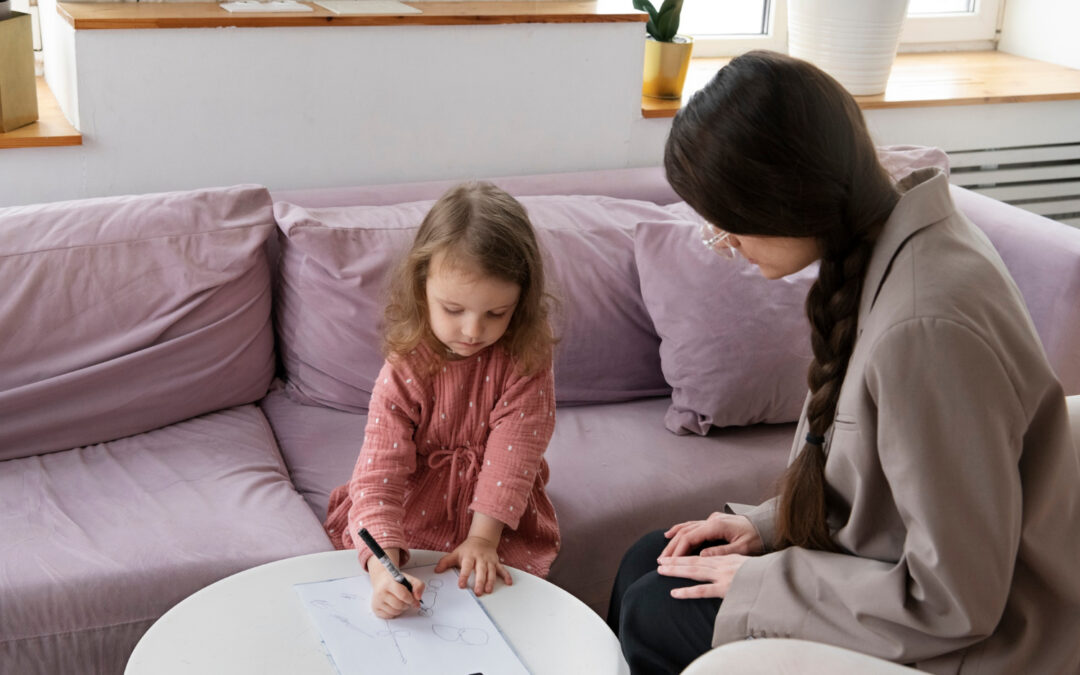At our core, we believe in making every learning opportunity as engaging and effective as possible, especially when it comes to Applied Behavior Analysis (ABA) for children with autism and other developmental disabilities. Understanding the role of engagement in ABA activities is crucial as it significantly impacts the learning outcomes and overall experience for the child. Engagement in ABA isn’t just about keeping a child busy; it’s about stimulating their interest, encouraging participation, and promoting meaningful interactions that support their development.
To harness the full potential of ABA activities, it’s essential to adapt these exercises to meet the diverse needs of children at various development stages. This customization ensures that each child is not just involved but is genuinely benefiting from the activities tailored specifically for them. By focusing on engaging strategies that meet individual needs, we enhance our ability to foster an environment ripe for learning and growth.
Evaluating the effectiveness of these activities is a continuous process, helping us refine our approach to maximize benefit. It involves observing changes, gathering feedback, and making informed adjustments to ensure that our methods are as impactful as they can be. Engaging ABA activities are more than just fun; they are a bridge to greater independence and skill acquisition for the children we support.
Understanding the Role of Engagement in ABA Activities
Engagement in ABA activities is vital because it directly affects how well children with autism connect with the learning material. When children are engaged, they are more likely to participate actively in the learning process, retain information better, and stay motivated over time. We prioritize making activities interesting and enjoyable, as this not only enhances learning but also helps in building positive behavioral patterns. To achieve this, it is essential to incorporate elements that capture and hold the child’s attention while addressing therapeutic goals.
We consider several key elements to boost engagement. These include choosing activities that align with the child’s interests, varying tasks to prevent boredom, and incorporating rewards that motivate the child to participate. Additionally, using clear and concise instructions helps children understand what is expected of them, making it easier for them to engage with tasks. Our approach ensures that each session is not just an instructional period but a time children look forward to, fostering both growth and a love for learning.
Top Engaging ABA Activities for Different Age Groups
The effectiveness of ABA therapy hinges significantly on the activities chosen for different age groups. Younger children, typically under five years old, benefit greatly from play-based activities that involve basic puzzles, interactive games, or simple crafts. These activities spark curiosity and help develop basic social and cognitive skills through playful engagement.
For older children, between the ages of six and twelve, more structured activities that incorporate educational goals work best. Examples include role-playing scenarios, which enhance communication skills, and organized sports or musical activities that encourage teamwork and fine motor development. For teenagers, we focus on activities that promote independence and problem-solving, such as completing household tasks, managing a schedule, or engaging in community service projects.
Each activity is designed to be fun and educational, ensuring that learning continues beyond the therapy sessions and helping each child reach their full potential at every stage of development.
Creating a Supportive Home Environment for ABA Success
Establishing a supportive home environment is key to maximizing the benefits of ABA therapy. This starts with understanding the specific needs of your child and adapting your living space to help meet these needs effectively. A supportive environment involves more than just physical space—it includes the emotional and behavioral setting that you cultivate.
First, consider creating defined areas in your home dedicated to different activities. For example, having a quiet corner where your child can have time to process and practice self-calming techniques can be crucial. This area could be equipped with comfort items such as soft lighting, cushions, or favorite toys that help reduce sensory overload. Similarly, setting up a designated space for learning and therapy activities can help your child transition between different parts of their daily routine more smoothly.
Monitoring Progress and Communicating with Your ABA Team
Consistent monitoring and communication with your ABA team are vital for assessing the effectiveness of home-based strategies and making necessary adjustments. Documenting your child’s responses to various interventions at home provides invaluable feedback that can help us tailor therapy more closely to their needs.
We encourage you to maintain a regular log of observations that include details about what activities were done, the child’s responses, and any challenges encountered. This log can be discussed during sessions with your ABA therapist, allowing for a collaborative approach to adapting strategies that best support your child’s development.
Additionally, take advantage of scheduled reviews with your ABA team to discuss progress and set future goals. These meetings are a great opportunity to ensure that home activities are effectively aligned with therapy goals and to make any necessary adjustments to support strategies.
Closing: The Power of Home in Enhancing ABA Therapy
Incorporating ABA principles into your home environment is an empowering step that can significantly amplify the positive impacts of therapy. By understanding and reinforcing therapy goals at home, creating a conducive environment for learning, and maintaining open lines of communication with your therapy team, you create a cohesive and supportive framework for your child’s development.
Remember, you are an integral part of your child’s therapeutic journey. Your active involvement and dedication are crucial in nurturing an environment that not only supports their current therapy goals but also fosters a lifelong journey of learning and adaptation.
Strive ABA Consultants is an ABA therapy provider committed to supporting you every step of the way, providing the guidance and resources necessary to enhance your child’s therapy experience. Contact us if you are seeking further assistance or need more resources to better integrate ABA strategies into your home setting.


